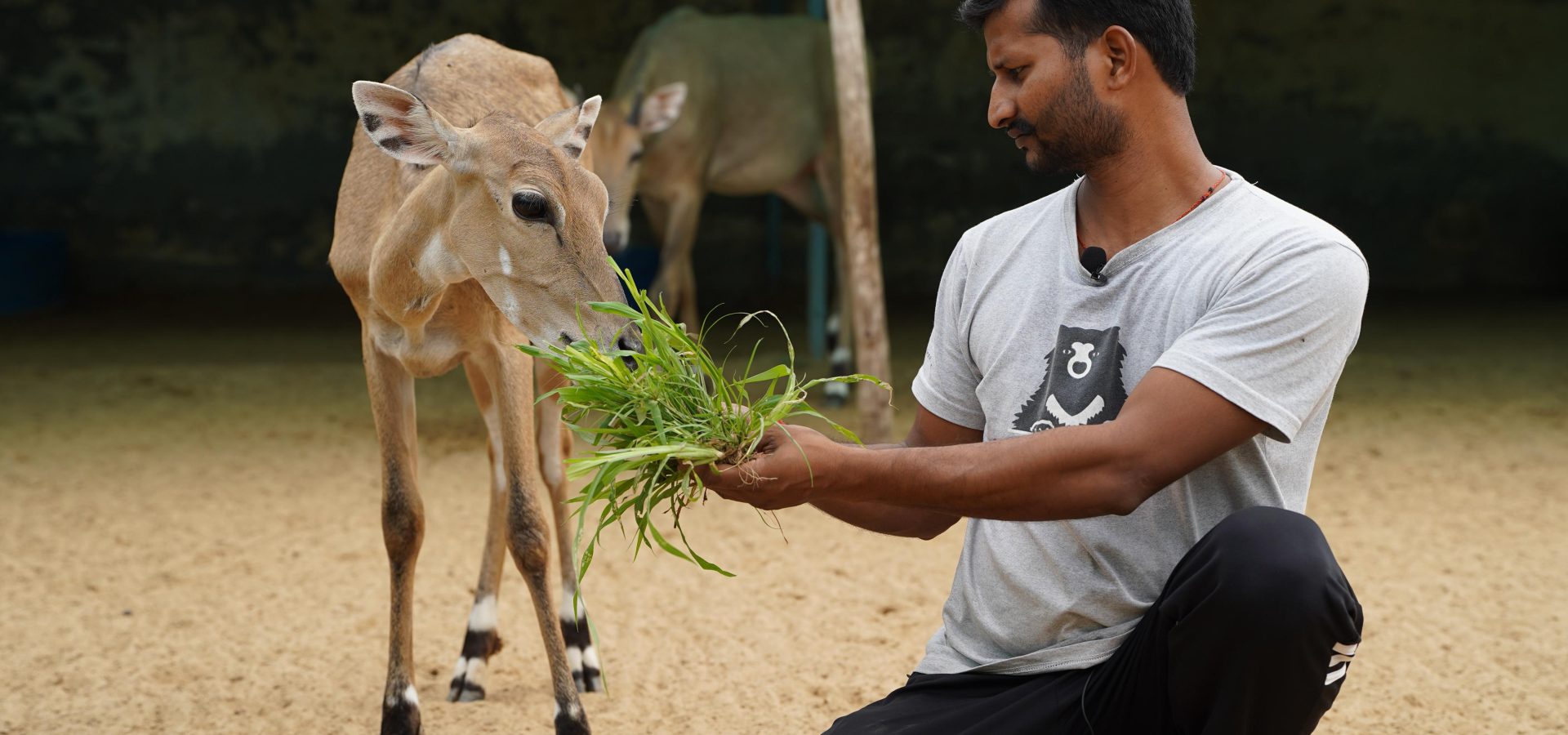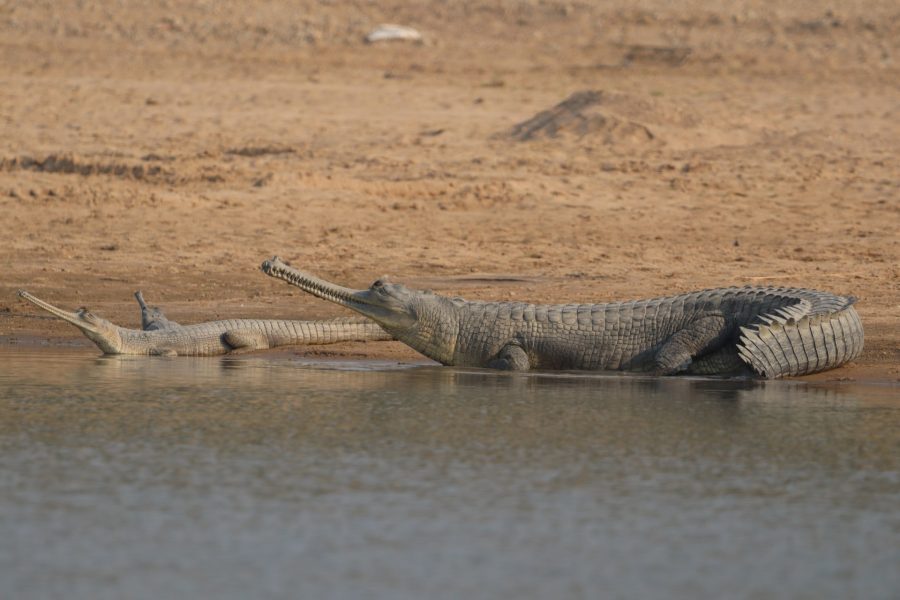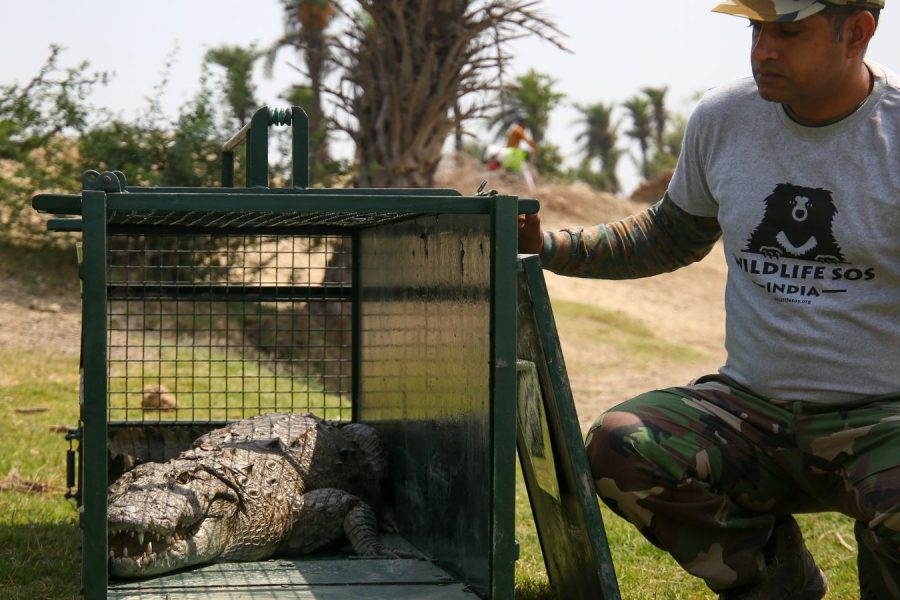The nilgai (Boselaphus tragocamelus), also called the blue bull, is one among the six antelope species found in India. It stands as the largest antelope of Asia, and is endemic to the Indian subcontinent. Belonging to the Family Bovidae that also comprises cattle species, these hoofed mammals inhabit areas with short bushes and flat grasslands of north and central states of India. Nilgais can be seen depicted in paintings from the Mughal era, and studies also suggest that remains of this antelope, dating back to 3000-2000 BCE, were found at an archeological site of West Bengal. These indicate not only its significance culturally, but how the areas they occupied had once been affluent with vegetation wildlife. Today, with factors like deforestation and loss of habitat taking place, the nilgai population’s recurrent encounters with people have led to more than several human-nilgai conflict situations — and these numbers are only rising.
The Hindi name nilgai translates to blue cow, however, the antelope’s strong, high shoulders, long legs and narrow heads make them resemble more to a horse than to a cow. The similarity with bulls traces itself to the distinctive blue-grey coat and short horns that male nilgais sport. Females have a warm, tawny hue, are smaller in size than the males, and are hornless. Both males and females share similar white patches on their cheeks, belly, and throat with their counterparts.
Nilgais tend to remain social within their species, and live in small herds of 10 or fewer members. Males often roam alone, except for when they seek females to mate with. After a gestation period of over eight months, females commonly give birth to a single calf, and only sometimes a litter of two or three. The calves remain hidden for the first month of their lives, before joining their mothers in the herd.
Blue bulls run swiftly and are active during the day. They demonstrate a remarkable behavioural flexibility in response to changing environments. As wild habitats shrink and human settlements expand, these antelopes venture closer to villages and farms, often feeding on food and fodder that domestic animals like cows, buffaloes, and goats graze on. A study conducted in western India has shown how nilgais can tolerate the proximity of livestock while they graze.
Challenges faced by Nilgai
The plight of the nilgai is deeply intertwined with the sweeping changes to their natural environment. Climate change, shifting vegetation patterns, and water scarcity severely impact their populations, while relentless urbanisation and the construction of highways and railways carve through their habitats, leaving them fragmented and desolate. Expanding agricultural fields displaces antelopes, forcing them to adapt to alternative food resources. The result? An increased reliance on farmlands for sustenance, which often leads to clashes with farmers desperate to protect their crops. Tragically, live electric lines have become a common, cruel, method to scare off these majestic animals.
Deforestation has also diminished natural predators of the wild, such as tigers and leopards. The absence of these apex predators has triggered an unnatural rise in prey populations that includes nilgai, thus damaging healthy ecological balance. In Bihar, this has resulted in widespread crop damage and economic losses for farmers in districts like Kaimur, Buxar, Bhojpur, and Vaishali where nilgais have established permanent dwellings near fields, ravines, and water sources, amplifying the frequency of conflicts. Sadly, the solution arrived at by the state government recently was to allow mass culling of nilgais.
There has also been an alarming increase in nilgai population in states like Gujarat, Uttar Pradesh, and Madhya Pradesh that has intensified human-wildlife conflicts. In response to this, the option of using darts containing contraceptive vaccines has also been tabled to mitigate their numbers. And that’s not all. Nilgais are infamously being called “vermin”, a term that could officially drop their level of protection from Schedule III to Schedule V of the Wildlife (Protection) Act, 1972. This would open doors to nilgais being unrestrictedly killed and poached for their meat and skin.
These biased solutions raise concerns among conservationists, who cite the ominous extinction of nilgais seen in neighbouring countries like Nepal, Bangladesh, and Pakistan as unfortunate examples. Mass culling would be an attempt to resolve conflict at the cost of an animal species, the loss of which would disrupt ecological balance, creating vacuums in the natural food chain. Additionally, using snare traps to capture a targeted animal also endangers other species that reside in the habitat, further exacerbating ecological harm. These practices, if given authorisation and are performed unchecked, could lead to severe biodiversity loss and irreparable damage to India’s fragile ecosystems.
In contrast to these extreme measures, innovative and humane solutions can offer hope for mitigating human-nilgai conflicts. Using an acoustic device that emits sounds to deter nilgais from farmlands is one way of preventing encounters. Similarly, reflective metallic items as fencing is an inexpensive yet effective approach to distract nilgais. Other non-violent methods include planting deterrent crops such as lemongrass and mint, or spraying fields with a mixture of donkey excreta and cow urine to repel wildlife.
By embracing such measures, we can prioritise coexistence over conflict, ensuring the survival of the antelope while safeguarding livelihoods. These steps are vital not just for the nilgai but for the health of India’s ecosystems, underscoring the need for innovative, compassionate, and forward-thinking strategies.
Conservation Efforts by Wildlife SOS
With gaps between forests and expanding cities closing, animals like the nilgai are increasingly pushed into areas near human settlements. This proximity brings in new dangers, including attacks by stray dogs that share these spaces. Nilgais and their calves are often chased, injured, and left with severe wounds. Wildlife SOS has intervened in numerous such cases by rescuing nilgais and providing them with essential medical care.
In November this year, Wildlife SOS provided relief to two nilgais from Agra that were victims of feral dog attacks. While one was a nilgai calf rescued from Mirzapur, Malpura, Agra, the other was saved from the Army area in Sadar, Agra. Both are receiving treatment and care, and will be released back into the wild once they recover.
A similar rescue involving a baby nilgai took place in the same month in Delhi. The calf, found in Vasant Vihar, had sustained a wound from a dog bite, and is now under the care of Wildlife SOS. With proper medications, first aid, and ongoing treatment by the team, this brave nilgai calf will return to the wild once he regains his strength.
Nilgais play an essential role in the ecosystem. Their nitrogen-rich droppings enhance soil fertility, supporting agricultural productivity and aiding afforestation efforts. This is also why they are known as “soil doctors”. Humane solutions to mitigate human-wildlife conflicts in India are the need of the hour. Every effort to foster coexistence between humans and nilgai is a commitment to a shared future—one that respects the dignity of life.
In case you spot a distressed animal in your locality, reach out to the nearest wildlife authorities for immediate assistance. If you reside in any of the following locations, contact Wildlife SOS’s Rapid Response Units, which are available 24×7:
- Delhi-NCR: +91-9871963535
- Agra, Uttar Pradesh: +91-9917109666
- Vadodara, Gujarat: +91-9825011117
- Jammu & Kashmir: +91-7006692300 or +91-9419778280
By supporting coexistence and spreading awareness, we can help create a safe and balanced environment for humans and wildlife.





